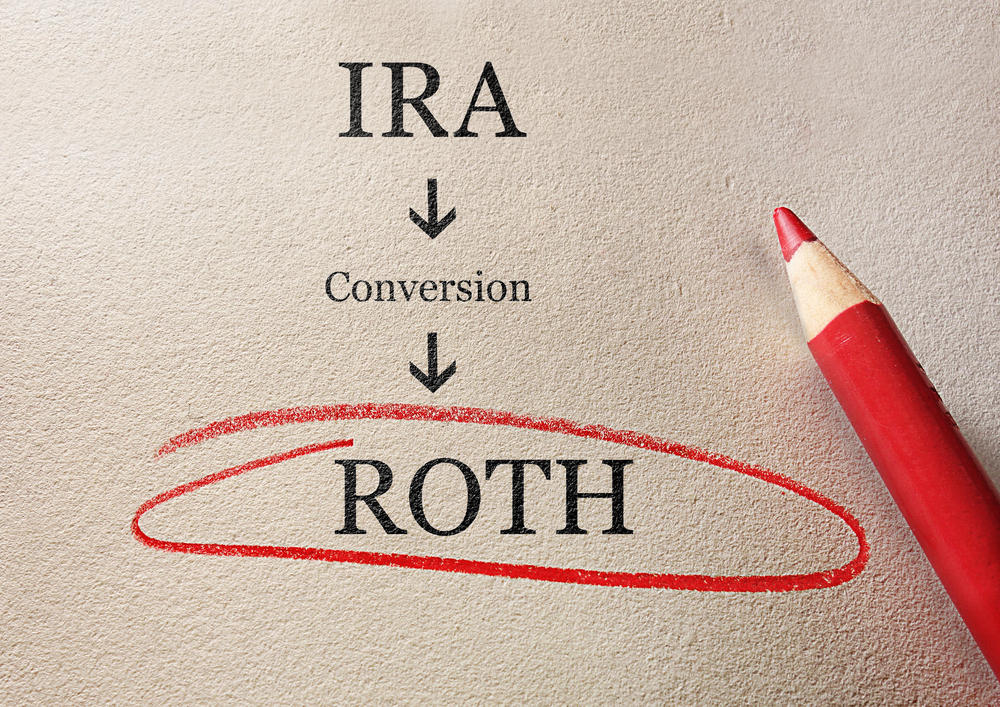The topic of Roth conversions is suddenly showing up in more of our conversations with clients. Earlier this year, when markets were dipping, clients, especially those closer to retirement, were thinking about conversions when their portfolios were at lower valuations.
The idea was to pay less in taxes now on assets with strong growth potential. More Americans are realizing that when and how you pay taxes on your retirement savings can matter as much as how much you save. That’s why Roth conversions, once considered a niche planning move, are now front and center for individuals looking to reduce lifetime taxes, increase future income flexibility, and build a more substantial legacy for the next generation.
In this post, we’ll walk through when a Roth conversion makes sense, what to watch out for, and a simple checklist you can use to evaluate if it’s the right move for your situation.
Start With the Basics
With a Traditional IRA, contributions are often tax-deductible today, but withdrawals in retirement are taxed as income. This can be a good fit if you’re in a high tax bracket now and expect to be in a lower bracket when you retire.
By contrast, a Roth IRA works in reverse. Contributions are made with after-tax dollars, but the growth and eventual withdrawals are entirely tax-free in retirement. That’s powerful, especially if you’re early in your career or expect to be in a higher bracket later on.
Age and Income Matter
If you’re under 40 or currently in a lower tax bracket, a Roth IRA is usually the smarter long-term move. It offers decades of compounding growth and tax-free income later in life. Plus, you won’t be forced to take Required Minimum Distributions from a Roth, giving you more control over your retirement income.
If you’re closer to retirement or in your peak earning years, a Traditional IRA may offer a greater short-term tax benefit. Deferring taxes now can help reduce your current liability and free up more capital to invest.
Roth Conversions
A Roth conversion means moving money from a Traditional IRA into a Roth. When you do this, you’ll pay taxes on the converted amount now, but future growth and withdrawals will be tax-free.
We’re seeing more clients explore conversions, especially during lower-income years like right after they retire, but before they begin claiming Social Security. If done strategically, converting in stages can reduce your overall lifetime tax burden and give you more flexibility down the road.
The key is to weigh your current tax rate against your expected future rate, and consider how long the money will stay invested. The longer your timeline and the higher your expected returns, the more a Roth conversion can make sense.
Roth Conversion Checklist: Should You Consider It?
Here’s a quick self-assessment you can use to evaluate if you are a candidate for a conversion.
- You expect your tax rate to be higher in the future. Whether due to rising tax rates or higher future income (e.g., Social Security, RMDs, pensions), paying taxes now at a lower rate could save you more in the long term.
- You’re in (or approaching) a lower-income year. Retired early? Taking a gap year? Running a business with lower-than-usual income? These are prime times to consider a conversion while your tax bracket is temporarily low.
- You don’t need the funds immediately. The longer your converted funds can stay in the Roth and grow tax-free, the more valuable the conversion becomes.
- You can pay the tax from outside funds. Using cash from savings (not the IRA itself) to pay the tax bill keeps your full converted amount intact and compounding.
- You want to reduce future required minimum distributions. Traditional IRAs come with required withdrawals starting at age 73. Roth IRAs don’t, which gives you more control and flexibility in retirement.
- You want to leave a tax-free inheritance. Roth IRAs are also attractive for estate planning. Heirs can receive distributions tax-free (subject to specific rules), which can preserve more wealth across generations.
There are a lot of variables, like taxes, timing, and goals, that should factor into the Roth vs. Traditional decision. Once you think through the checklist above, consider these items your cautions.
- Watch for tax bracket creep. Converting too much in one year can push you into a higher tax bracket. Strategic partial conversions over time often make more sense.
- Mind your Medicare premiums. If you’re over age 65, increased income from a large conversion could raise your IRMAA charges (Medicare premium surcharges).
Most importantly, I encourage you to coordinate this move with your financial planner. I usually cover how Roth conversions will impact my client’s taxes, retirement cash flow, and estate plans. Activating a conversion against a customized retirement strategy that generates optimal income in retirement for you is key.
Reach out to me HERE if I can help you with your journey.
